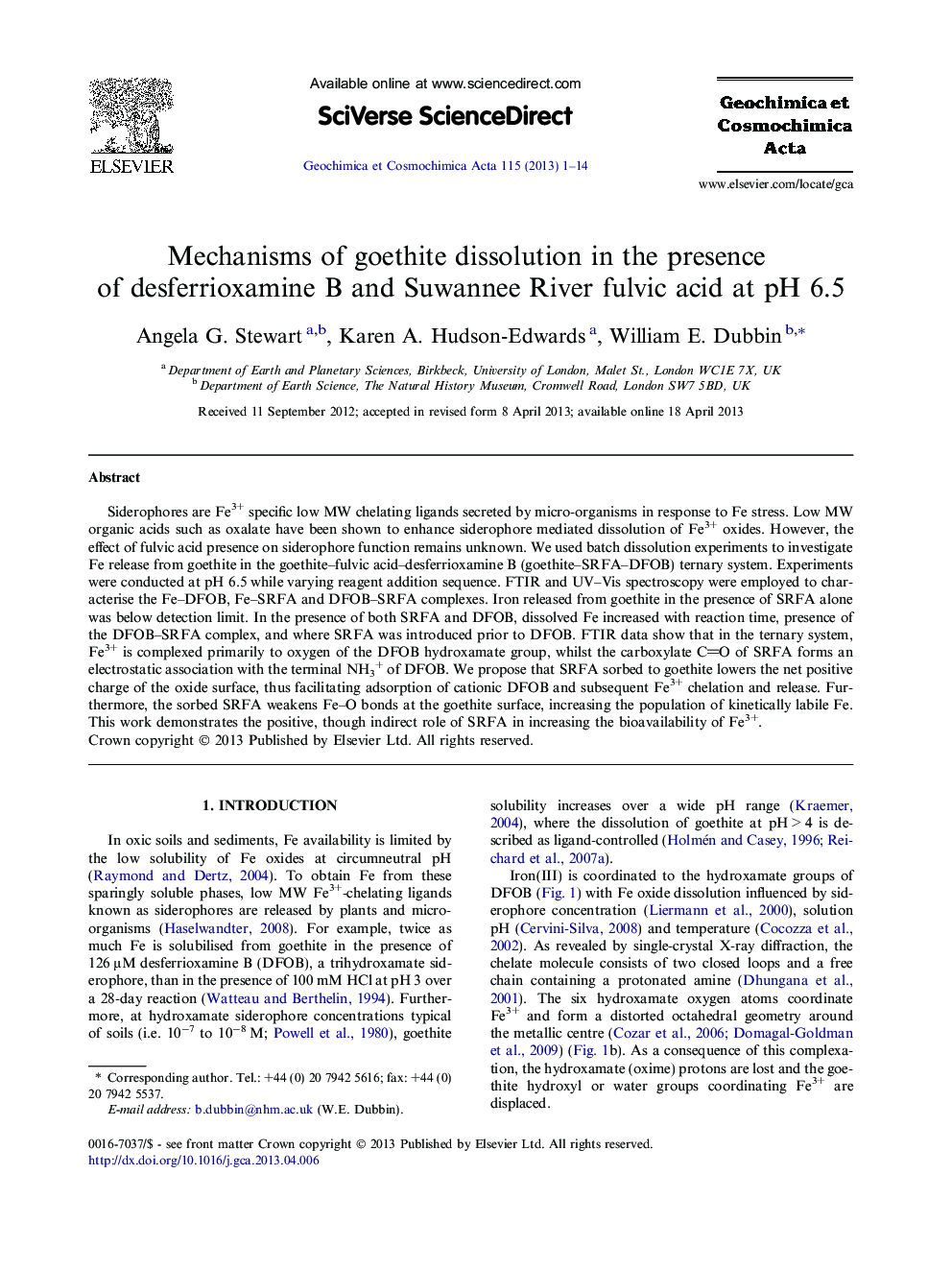| Article ID | Journal | Published Year | Pages | File Type |
|---|---|---|---|---|
| 4702340 | Geochimica et Cosmochimica Acta | 2013 | 14 Pages |
Abstract
Siderophores are Fe3+ specific low MW chelating ligands secreted by micro-organisms in response to Fe stress. Low MW organic acids such as oxalate have been shown to enhance siderophore mediated dissolution of Fe3+ oxides. However, the effect of fulvic acid presence on siderophore function remains unknown. We used batch dissolution experiments to investigate Fe release from goethite in the goethite-fulvic acid-desferrioxamine B (goethite-SRFA-DFOB) ternary system. Experiments were conducted at pH 6.5 while varying reagent addition sequence. FTIR and UV-Vis spectroscopy were employed to characterise the Fe-DFOB, Fe-SRFA and DFOB-SRFA complexes. Iron released from goethite in the presence of SRFA alone was below detection limit. In the presence of both SRFA and DFOB, dissolved Fe increased with reaction time, presence of the DFOB-SRFA complex, and where SRFA was introduced prior to DFOB. FTIR data show that in the ternary system, Fe3+ is complexed primarily to oxygen of the DFOB hydroxamate group, whilst the carboxylate CO of SRFA forms an electrostatic association with the terminal NH3+ of DFOB. We propose that SRFA sorbed to goethite lowers the net positive charge of the oxide surface, thus facilitating adsorption of cationic DFOB and subsequent Fe3+ chelation and release. Furthermore, the sorbed SRFA weakens Fe-O bonds at the goethite surface, increasing the population of kinetically labile Fe. This work demonstrates the positive, though indirect role of SRFA in increasing the bioavailability of Fe3+.
Related Topics
Physical Sciences and Engineering
Earth and Planetary Sciences
Geochemistry and Petrology
Authors
Angela G. Stewart, Karen A. Hudson-Edwards, William E. Dubbin,
